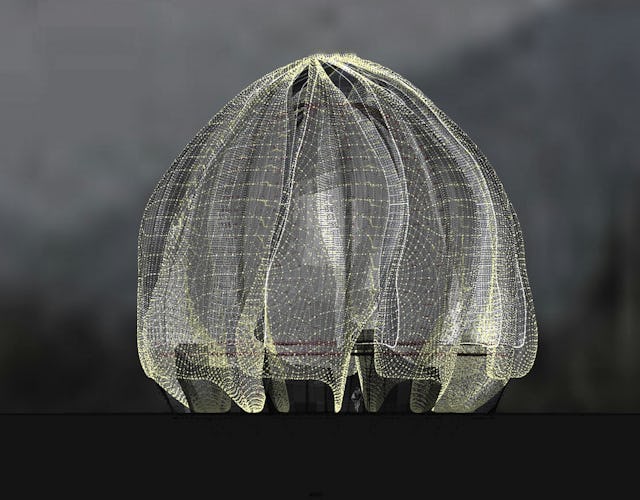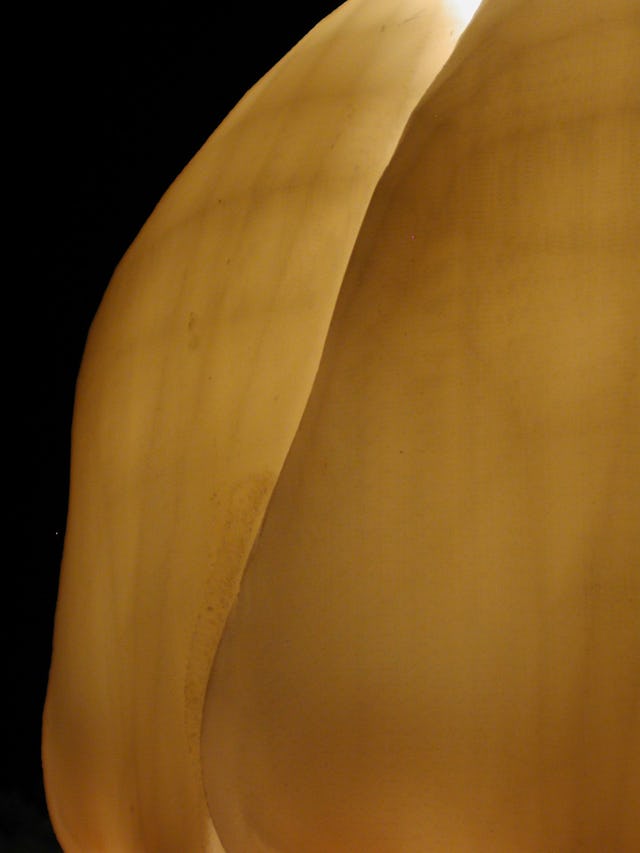Spectacular site for Chile temple
SANTIAGO, Chile — The first Baha'i House of Worship in South America will be built in the Andean foothills with a panoramic view of the mountains in three directions.
The National Spiritual Assembly of the Baha'is of Chile has taken possession of a 110-hectare site in a rural region of the Chacabuco Province some 35 minutes by car north of the center of Santiago.
The House of Worship will be on the top of a hill in a seven-hectare section of the site that will constitute the immediate grounds and gardens of the Temple.
The temple, designed by Canadian architect Siamak Hariri, will be clad in forged glass and Spanish alabaster. The translucent stone will allow sunlight to filter through during the day and the Temple to emit a warm glow from the interior lighting at night.
The nine "wings" that form the exterior will torque upwards, overlapping at the apex to create a dome.
The groundbreaking ceremony for the US$27 million temple will be held in October 2005, and the building should be completed within three years, said a spokesman for the Baha'i International Community, Douglas Moore.
The municipal authorities have given pre-project approval and an environmental impact study is now under way, Mr. Moore said.
"The site is arid and semi-desert in character and is untouched, unspoiled land with its original vegetation," he said.
"An access road has just been completed, and other preliminary work is to begin with some landscaping and tree planting," he said.
"The Bicentennial Commission of the Chilean government has designated the Baha'i House of Worship as one of a limited number of official projects in the private sector to commemorate Chile's 200 years of independent nationhood," Mr. Moore said.
"We are glad to see the civil authorities' recognition of the significance of this edifice and their confidence in the benefit the undertaking will bring to Santiago and to Chile as a whole."
Mr. Moore said the project would be financed entirely by voluntary contributions from Baha'is around the world.
Representatives from all national Baha'i communities of the Western Hemisphere will be invited to attend the groundbreaking ceremony, with a special emphasis on the countries and indigenous peoples of South America.
Chile had been mentioned as the site for the first Baha'i Temple of South America in a message to the South American Baha'i convention in 1953 by the then head of the Faith, Shoghi Effendi.
There has been widespread media attention to the Temple project since the announcement on 12 June 2003 by the Universal House of Justice that it had chosen a design by Mr. Hariri of the Toronto firm of Hariri Pontarini Architects.
The design has won accolades from writers in more than 40 international architectural and design journals published in a range of countries including, for example, Australia, Canada, Italy, Germany, Russia, and the United States.
The "Canadian Architect" journal featured the design on its December 2004 cover as one of its 2004 Awards of Excellence.
A judge for the awards was quoted in this journal as saying, "this project represents a rare convergence of forces that seem destined to produce a monument so unique as to become a global landmark."
"One can only marvel at the architect's commitment to originate this form, the energy with which it has been developed, and the power of religious belief in motivating artistic achievement."
Another journal "The Architectural Review" said in its April 2004 issue that the Temple "should become a gentle and welcoming beacon to the whole of South America."
For more information on the Baha'i House of Worship for South America, see
https://news.bahai.org/story.cfm?storyid=223

